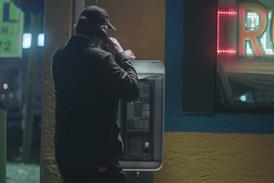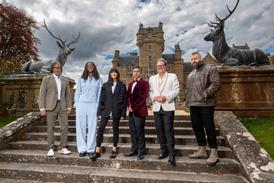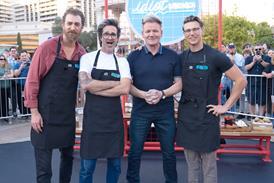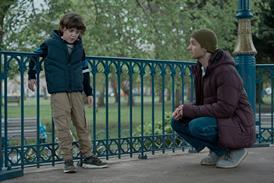As part of the documentary How Fat is the Future? for Sky Real Lives, we needed to find a morbidly obese patient who was about to undergo weight loss surgery on the NHS.
The documentary is about the obesity epidemic that's hitting Britain and various solutions to the problem. We had six weeks to research and shoot the hour-long documentary starting in March and April so we were incredibly lucky to meet the Bariatric surgical weight loss team at Charing Cross Hospital who gave us unrestricted access to their surgical unit.
Time was tight and Mr Ahmed, the head surgeon, immediately called the patients who were having operations in the next two weeks and asked if they wanted to take part. We found a perfect candidate, a lovely 39-year-old mother of two called Joy who was open and honest about her lifetime of weight problems.
When it came to filming Joy's gastric bypass operation, the doctors were very clear about the ground rules. Don't touch anything that's blue because that means it's sterile and, whatever you do, don't faint. If you feel faint leave the room - but please don't actually faint because it disrupts the operation.
We'd spent a couple of days filming with Joy and getting to know her so it was quite moving to watch her being put under the anaesthetic and see the life drain out of her face. The operation involved keyhole surgery and the surgeon put a camera into Joy's abdomen so he could see what he was doing. This meant we could film the monitor which showed the skilful cutting, stapling and creation of Joy's new stomach.
I'd filmed surgery before and so felt reasonably confident that I'd be okay. However, about 20 minutes into the operation, I became very faint. I tried to compose myself but couldn't and had to leave the theatre. I was sitting outside, devastated to be missing it all, but aware of how disruptive it would be for the doctors if I passed out. I had to trust that my cameraman could work without my direction and I would have to watch the rushes later.
Any surgery with anaesthetic comes with the risk that you might not wake up. The risks for Joy's stomach bypass are less than one death in five hundred procedures. Nevertheless we were all very relieved when she did wake up.
On our first recce to the hospital we had witnessed the patient support group where new patients who are considering having surgery meet those who had already had it to hear about their experiences first hand. The scene was fascinating. Most of the patients who had had surgery were delighted with the results, and the new lease of life and freedom from health problems it brought. But they also described the after-effects of the surgery including vomiting, flatulence and halitosis, as well as detailing the food they can no longer eat and all the things that can go wrong during surgery.
We anticipated not all the patients would want to go on national TV talking about their weight problems, so we agreed that before we returned to film the group the clinic would inform all patients about our plans to film them. When we arrived to film we found to our amusement, and slight horror, the hospital had told everyone we were filming for a “patient information film” because they didn't want to put anyone off.
We had to go around the room and explain to each individual that it was actually for a documentary for Sky Real Lives. A few of them were concerned but we explained that it would be a sensitive documentary and consequently out of a room of 45 we only had to blur out five people's faces in the online.
This show was the first tapeless production I'd ever worked on. It was shot in HD on a Panasonic HVX 3000 P2P camera. Instead of tapes the camera had five memory cards, which together held about two and a half hours of footage. The only differences it made in the field were that we didn't have to stop to change tape every half-hour and neither I nor my AP, Georgie Blackwell, had the bore of taking the tapes back to the office.
It was slightly disconcerting not to have any physical evidence of our day's work - these flimsy electronic cards held the fruits of our labour. To view our footage, rushes were downloaded onto a hard drive. Unfortunately my computer wasn't powerful enough so I ended up listening to the material rather than watching it. It seems that this technology is the future for television so perhaps it's time for me to buy a new computer.
Sky Real Lives: How Fat is the Future? is a ZKK production for Sky Real Lives. It airs on Friday 27 June at 10pm
Carolyn Payne: My tricks of the trade
Scales - preferably industrial strength, for people who weigh more than 20 stone. Lots of morbidly obese people don't weigh themselves but you know you'll need that all-important voyeuristic line of commentary: “At her heaviest, Joy weighed 21 stone.”
Get the work experience person to arrive with a taxi to hurry along contributors who are known to be late or flaky.
When working with children we found that asking the parents to conduct the interview was less intimidating for them.
Chewing gum - the anaesthetist gave me some when I was feeling faint during surgery - it helps!


























No comments yet